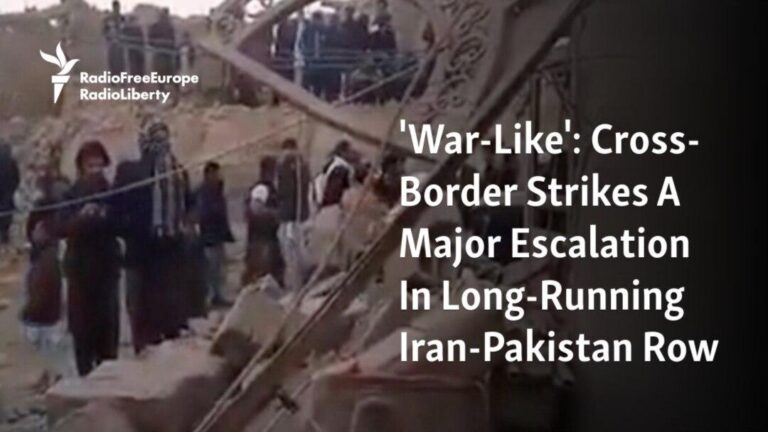Rising Tensions: The India-Pakistan Standoff
The recent surge in cross-border attacks has considerably heightened tensions between India and Pakistan, casting a shadow of potential war over the subcontinent. Both nations, equipped with nuclear arsenals and a history of deep-seated animosities, find themselves at a critical juncture. As violence escalates and diplomatic relations deteriorate, pressing questions arise regarding the feasibility of conflict resolution in such an unstable environment. This article delves into the latest developments, explores the ancient grievances that underpin this fraught rivalry, and outlines the challenging journey toward peace that both countries must undertake to avert catastrophic consequences. With global observers advocating for restraint, all eyes are on whether diplomacy can succeed in a region where every misstep coudl lead to dire repercussions.
Analyzing the Rising Tensions Between India and Pakistan
In recent weeks, relations between India and Pakistan have become increasingly precarious due to a series of aggressive maneuvers and retaliatory actions along their shared border. Both countries have engaged in military displays that heighten fears of an impending larger conflict—especially following incidents resulting in civilian casualties. This ongoing cycle of violence has created an atmosphere filled with uncertainty, as both governments face internal pressures fueled by nationalist fervor that complicates any efforts toward de-escalation.
Several key factors contribute to this strained relationship:
- Historical Grievances: Long-standing territorial disputes over Kashmir continue to stoke animosity between both nations.
- Terrorism Concerns: Non-state actors operating within these borders frequently enough exacerbate tensions through frequent cross-border incidents.
- Navigating Domestic Politics: Politicians frequently exploit national security issues for political gain,further complicating peace initiatives.
The path towards diplomatic engagement is fraught with challenges as trust erodes on both sides. While international entities call for calmness amidst rising hostilities, one crucial question remains: can these two nations chart a course away from brinkmanship towards meaningful dialog?
Historical Background and Core Issues Fueling the Conflict
The enduring discord between India and Pakistan dates back to their partition in 1947—a pivotal moment that sowed seeds of division marked by distrust and territorial disputes. The two countries have fought several wars primarily centered around the contested Kashmir region, which remains divided but claimed by both sides. This intricate historical context is characterized by strong feelings of nationalism intertwined with religious divides—each contributing to an environment ripe for conflict.
Certain significant events throughout history—including multiple Indo-Pakistani wars (1948, 1965, 1971) alongside increased militancy during the late 20th century—have intensified tensions while complicating diplomatic resolutions.
- Proxy Conflicts: Support for insurgent factions within Kashmir perpetuates ongoing strife.
- Nuclear Deterrence: The possession of nuclear weapons by both nations raises alarm about any potential military confrontation.
- The role of Global Powers: International alliances have historically influenced regional dynamics by favoring one nation over another.
- Scarcity of Resources:Competition over water resources adds another layer to existing conflicts within contested territories.
This volatile backdrop has led recent cross-border strikes to evoke fears about escalating into full-scale warfare as public sentiment frequently enough leans towards hardline responses—further complicating prospects for peaceful dialogue.
Diplomatic Solutions: Approaches to De-escalation and Peacebuilding
The international community is urging India and pakistan not only pursue military solutions but also explore diplomatic channels following recent violent exchanges across their borders. Given each country’s significant military capabilities—the risk posed by potential large-scale warfare looms large with perhaps devastating humanitarian impacts.
An effective strategy for de-escalation should be multifaceted; analysts emphasize fostering dialogue alongside confidence-building measures as essential components:
- Initiating Open communication: Establishing informal communication channels allows leaders from both sides discuss grievances while minimizing misunderstandings.
- Engaging Third-party Diplomacy: Neutral countries or organizations can facilitate discussions entrenched deeply within national pride.
- implementing Confidence-Building Initiatives: Joint humanitarian projects or cultural exchanges may help cultivate goodwill among populations on either side.
Additionally public opinion plays an influential role shaping governmental approaches toward peacebuilding efforts; addressing citizens’ concerns regarding security proactively lays groundwork favorable negotiations moving forward . Recent surveys indicate shifting perspectives among populations regarding peace initiatives , highlighting opportunities available :
. . . . . . . . . . . . . . . . . . . . . . . . . . . . . . . . . . . . . . . . $ $ $ $ $ $ $ $ $ $ $ $ $ $ $ $ $ $ $ $ - - - - - - - - - - - - - - - - - - - -Nations % Support For Peace Talks % Concern Over Military Conflict <tdIndia<td65<td80 <tdPakistan<td70<td75
Conclusion: Navigating Towards Stability Amidst Rising tensions
The resurgence of cross-border skirmishes between India and Pakistan has reignited apprehension surrounding South Asia’s fragile security landscape .As each nation confronts ramifications stemming from escalating hostilities , fears loom large concerning possible all-out war. Even though diplomatic endeavors remain vital mitigating current crises , pathways leading toward lasting peace are laden with obstacles .Experts stress importance engaging citizens fostering understanding cooperation necessary achieving sustainable resolutions moving forward. Global observers remain hopeful lessons learned will guide these neighboring states towards stability avoiding conflicts capable inflicting severe consequences millions lives involved . As developments unfold , it becomes imperative international community stays vigilant advocating resolution stability one most volatile regions globe .
. . .



